Charles W. and Ella Portia Conger Goodyear House - Table of Contents
![]()
Charles W. and Ella Portia Conger Goodyear
House - Table of Contents
Charles W. Goodyear
- History
888 Delaware Avenue, Buffalo, New York
TEXT Beneath Illustrations
 Charles W. Goodyear. Source: "Men of New York," Buffalo: Geo. E. Matthews, 1898 See photos of Charles and Frank Goodyear from 1903 Courier Express 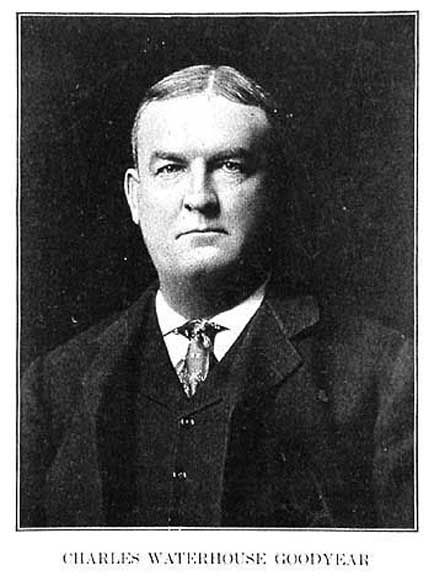 Source: "A History of the City of Buffalo," published by the The Buffalo Evening News, 1908 See photos of Charles and Frank Goodyear from 1903 Courier Express  The Buffalo and Susquehanna Iron Co. Source: "A History of the City of Buffalo," published by the The Buffalo Evening News, 1908 Goodyear memorial at Forest Lawn 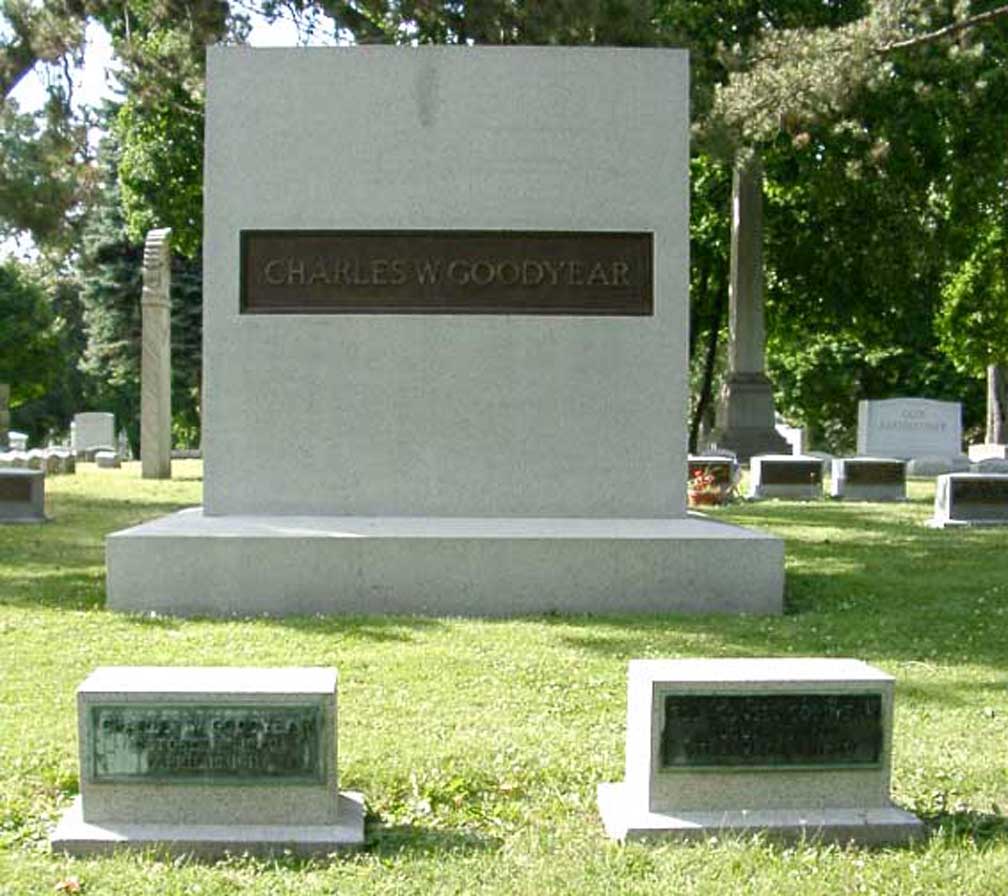 Cemetery (Section 1) 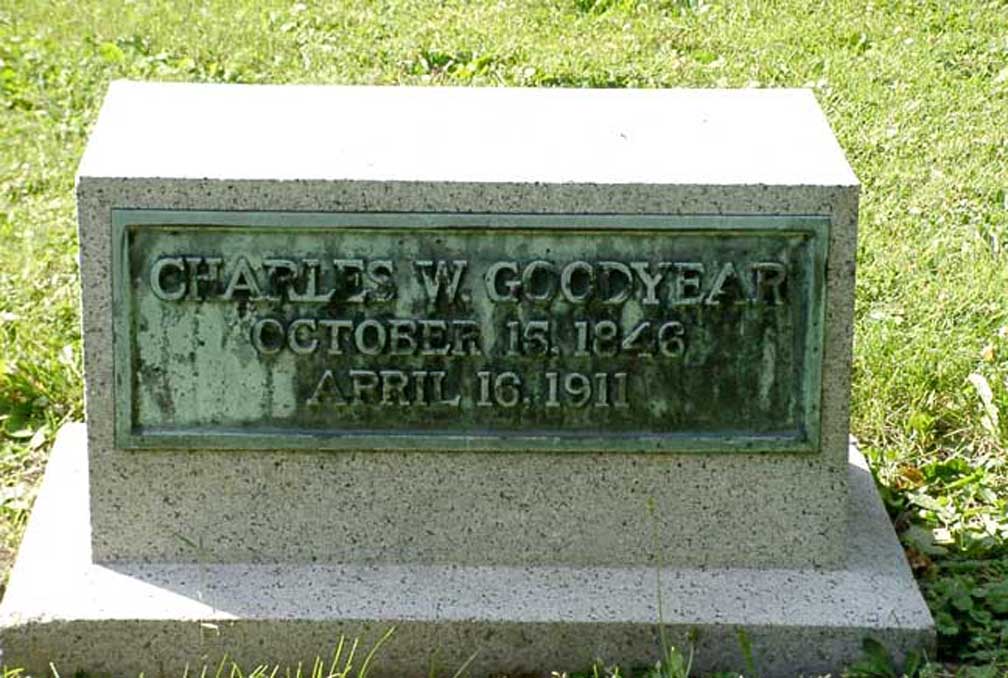 Charles Goodyear grave marker  Charles Goodyear's wife's grave marker 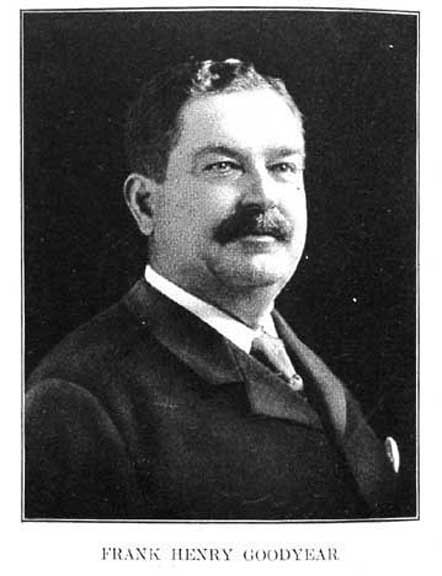
Charles's
brother and partner, Frank 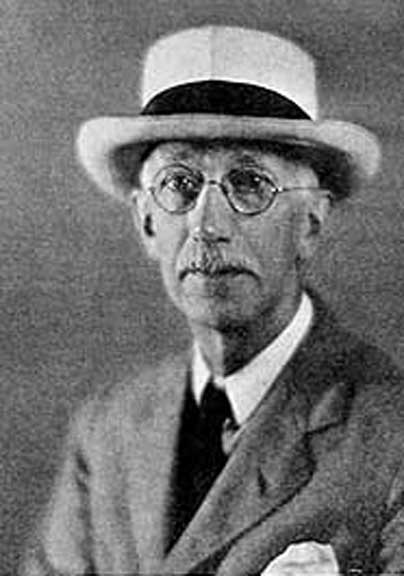 E. B. Green, architect |
|
Completed: |
1903. Cost: $225,000 |
|
Architect: |
Green & Wicks |
|
Style: |
French Renaissance. An excellent example of French Chateauesque. |
|
Original Owner: |
Charles
Waterhouse Goodyear was born in Cortland, Cortland
County, New York, October 15, 1846, the son of Doctor Bradley
Goodyear and Esther P. Kinne. He received his school training in
the academies of Cortland, Wyoming, and East Aurora, New York,
finishing his school days in 1867. Goodyear the Attorney In 1868 he came to Buffalo to study law in the offices of Laning & Miller, later continuing his professional preparation with John C. Strong. He was admitted to the bar in 1871, and immediately began his practice in this city. This individual practice continued until 1875 and was marked by much success. In that year Mr. Goodyear formed a partnership with Major John Tyler, which continued for two years. From 1877 until 1882 Mr. Goodyear again practiced alone, and in February of that year formed a partnership with Henry F. Allen under the firm name Goodyear & Allen. In 1883 Grover Cleveland, becoming governor of New York State, retired from the law firm of Cleveland, Bissell, and Sicard, and Mr. Goodyear joined that firm. Thereafter, for four years, the firm of Bissell, Sicard & Goodyear, was one of the most distinguished legal firms in western New York. Goodyear the Politician From January 1st, 1875, until October 1st, 1877, Mr. Goodyear served as Assistant District Attorney under District Attorney Daniel N. Lockwood, who was elected to Congress in 1876 and who resigned the office of District Attorney in the autumn of 1877, whereupon Mr. Goodyear was appointed by Governor Robinson to fill the unexpired term. Goodyear the Lumber Baron In January, 1887, Mr. Goodyear gave up the practice of law to form, with his brother, Frank H. Goodyear, the lumber company and kindred organizations that became quite prominent in the business world. The firm name became F. H. & C. W. Goodyear, and almost immediately their operations became so extensive that it was necessary for both to give their undivided attention to them. They were pioneers in the construction of standard built and equipped railroads for logging operations, penetrating the timber tracts of Pennsylvania, which had, up until that time, been considered well-nigh inaccessible to railroads. The annual output of their holdings amounted to 200,000,000 feet of hemlock (they were the world's largest manufacturers of hemlock) and nearly as much in hardwood, which was shipped over their own railroad, the The Buffalo and Susquehanna Iron Co.. The line became a permanent freight and passenger line, with three hundred and fifty miles of first-class standard-gauge track and roadbed. Mr. Goodyear held office of trustee of the Buffalo Normal School, was organizing director of the Pan American Exposition and president of the Buffalo Club. Among his close friends were President Grover Cleveland, as well as Cleveland's Secretary of State Daniel S. Lamont. He was largely responsible for the nomination of Grover Cleveland for Governor of New York. He and his wife were the first guests of President Cleveland and his new bride at the White House. Charles Goodyear died in 1911. In 1876, he married Ella Portia Conger of Collins Center, NY., who lived in the house until her death in 1940. For photos of Charles and his wife, see Bogalusa Story |
|
Subsequent Owners: |
Shortly after Mrs. Goodyear's death,
the mansion was sold to the Blue Cross
Corp., which made slight
alterations. For a newspaper account of transition from private
home to office building, see Alterations
to be few; Panels kept. The company occupied the mansion until its sale to the Catholic Diocese of Buffalo in 1950 for $85,000 for the Bishop McMahon High School. In 1953 and 1959, additions to the mansion were built. See Girls Study in a Home Royalty Visited 2002 owner: Robert B. Adam Education Center: The Children's Hospital |
|
Also on the property (not photographed): |
Carriage house. Power building for coal furnaces. During the winter, the house required up to 1 1/2 tons of coal per day for heat. Power plant connected to the house by a 4' wide tunnel. |
Sources of information:
- 1999 Preservation Coalition tour and additional research by Greg Lodinsky, tour guide
- "A History of the City of Buffalo," published by the The Buffalo Evening News, 1908
- "Identifying American Architecture," by John J.-G Blumenson. New York: Norton. 1981
Charles W. and Frank H. GoodyearBy C. W. Goodyear
Excerpts from Bogalusa Story, pp. 46-60
CHARLES Waterhouse Goodyear was fifty-six and Frank Henry Goodyear was fifty-two when the brothers invested nine million dollars in their fifteen-million-dollar venture in Louisiana and Mississippi. Earnings accumulated from lumber and coal enterprises in Pennsylvania provided the necessary funds.
But the Great Southern Lumber Company, from its beginning to its end years later, was essentially a Goodyear family enterprise.
Like many of their contemporaries of comparable industrial achievement and stature, the two brothers who founded this fabulous lumber empire started life with meager beginnings. They were born in a rural settlement near Cortland, New York. Their father, Bradley Goodyear, was a country doctor. A poignant memory that never left them was the sound of sleigh bells waking them in the darkness of a winter's night as their father hurried to an expectant mother or drove for miles in a blizzard to prescribe a hot mustard foot bath for a hysterical patient who feared that death was imminent.
Practicing his profession among families of modest means, often without compensation at all, Dr. Goodyear never was able financially to provide his sons with educational advantages beyond those which were available in the public schools. The white one-room rural schoolhouse where they obtained their elementary education was typical of hundreds of others ...
Both of the Goodyear boys inherited a few traits in common from their mother, but otherwise their characters, personalities, and appearances were completely unlike. Like their mother, both were ambitious to succeed, impulsive with quick tempers, generous with their worldly goods and tolerant of the frailties of others. Unlike their father, the brothers were stockily built. A later tendency toward obesity was allowed to take its course in unrestrained gastronomy and with as little exercise as possible. Athletics did not become popular until late in their lives. Among women of their day, voluptuous bosoms and well-rounded buttocks were considered necessities of pulchritude. Among men, a protruding stomach was a mark of enviable distinction. At middle age, both of the brothers weighed well over 200 pounds.
The urge to do great things could not long be satisfied in their native New York State village. Frank was the first to leave home. Still in his teens, he had an insatiable desire to make money that was to stay with him all the years of his life. Coupled with that consuming ambition were abundant energy and keen business sense. With his worldly possessions packed in a small satchel and $100 borrowed from his father, young Frank boarded the train for Looneyville on the outskirts of Buffalo. It was here that he began what was to be a spectacular business career, as a $35 a month employee of Robert Looney, founder of the town which honored his name.
The urge to search out greater opportunities soon made itself felt. In 1872, Frank Goodyear and his young wife moved to Buffalo. Frank was only twenty-two, but, financed by Elbridge Gerry Spaulding, a leading citizen of Buffalo who was nationally known as the "Father of Greenbacks," he set up a lumber-and-coal business of his own. Mr. Spaulding must have been much impressed with Frank's business acumen, for generosity was not one of the old gentleman's characteristics. The wealthy Mr. Spaulding made a practice of walking to his office to save the five-cent fare in a horse-drawn street car, and it was his custom to read the penny newspaper as it lay on the newsstand. The fact that Frank sold Mr. Spaulding the idea of financing a business scheme was evidence of a talent that was to make him an outstanding industrialist of his time.
In a few years, Frank Goodyear liquidated his indebtedness and built up a lumber-and-coal business that provided capital for investing in even larger and more profitable enterprises. By this time he knew the lumber business was to be his life, and the idea appealed to him. He was impatient to expand his interests; he felt bridled and restrained. When finally he heard that a large tract of virgin hemlock timber in Potter County, Pennsylvania, might be had at a reasonable price, he could hardly wait to see it. He took the first train to Keating Summit, a flag station on the very edge of the timberlands.
Alone he climbed, almost ran, to the top of a mountain, where his eyes scanned thousands of acres of hemlock trees that had scarcely known the stroke of a woodsman's ax. He looked at it longingly for hours and when he came back down the mountain, his decision was made. In a few years he owned and operated fifteen sawmills in northern Pennsylvania. He made their management a one-man job at which he worked night and day. And at the age of thirty-seven, he broke under the strain of his own intense nervous energy. He was stopped for the first time in his life, but not for long.
Charles Goodyear was cut from a different cloth, of a more versatile pattern. There was ambition, but it was less compelling than that which possessed his brother Frank. A professional career rather than business success appealed to him as a young man. During his summers, as a youth, he worked on a farm and in a tannery to pay for an education in the academies at Wyoming, Cortland, and East Aurora in western New York. He was a talented orator and was one of the finest debaters in the schools he attended. For awhile he taught school before he, too, went to Buffalo to study law.
In 1871, when he was twenty-six years old, he was admitted to the bar in New York State and hung out his own shingle. From the start of his career he attracted attention as a young lawyer, and later succeeded Grover Cleveland as a senior partner in Buffalo's leading law firm when Cleveland gave up his practice to enter politics. With his brilliant personality, distinguished physical appearance, and oratorical ability it was not surprising that Charles Goodyear, too, should dabble in politics.
In 1876, he was appointed Assistant District Attorney in Erie County. Later he was District Attorney. After one important and sensational trial, a Buffalo newspaper commented: "No case that has been before the courts in many a day has been so cleverly handled as by Mr. Charles W. Goodyear."
Public life was beginning to attract Charles Goodyear more and more. His close friendship with Grover Cleveland also was an incentive to a growing interest in politics. In 1882, he was elected County Chairman of the Democratic Committee. In this first position of political leadership, he won his spurs. He played an important role in the nomination and the election of Grover Cleveland as Governor of New York State.
Years later, a boom was started for the candidacy of Charles Goodyear in the gubernatorial campaign of 1904. He declined at the outset, but his political backers were persistent and a "Goodyear for Governor" movement gained momentum.
The position of Ella's husband [Charles] in the community [Buffalo] was well established and he was a successful, prominent lawyer. But he was beginning to realize that the legal profession never would assure him more than a comfortable living, and Charles Goodyear needed more than that.
In 1887, Charles became his brother's partner in the already established lumber business. Frank again had cracked under the strain of excessive work and had gone to Europe. Charles took over, assuming the responsibility of running a large lumber enterprise. As a lawyer he frequently had been associated with the affairs of corporations, so that he was not long adjusting himself to the problems attached to his new vocation. He spent most of his time in Pennsylvania, actively managing the business from the logging of timber to the final processing of lumber.
ALL during the Gay Nineties, Charles and Frank rode on the crest of the wave. They were approaching middle age. Their business was running smoothly and profitably. Frank had a million dollars on deposit in the bank and a fortune besides in stocks and bonds, but his ambition to make still more money never lessened until the last year of his life. Already he had dreamed of another lumber operation when the supply of hemlock timber in Pennsylvania was exhausted. He knew there were almost boundless tracts of virgin yellow pine in the Deep South. The urge to build the largest sawmill in the world grew as Frank studied the glowing reports of timber cruisers in Louisiana and Mississippi.
The home of Charles and Ella was only a short distance from Frank's [Charles's brother] elaborate house and it [Charles & Ella's house] was the scene of many brilliant social affairs and family gatherings. In later years, it was not unusual for twenty-five children and grandchildren to sit down together at a Sunday or holiday dinner. A large garden party on the well-manicured lawn at the rear of the house became an annual summer event.
Early in the new century, Charles and Frank Goodyear saw the beginning of the end of their Pennsylvania lumber business. Liquidation was inevitable. What to do with their money became a new problem for the Goodyear brothers. A meager return of 6 per cent from gilt-edge corporate bonds or 4 per cent on bank deposits satisfied neither of them. They found the solution to their dilemma in the timberlands of the Deep South. They decided to put a large part of their eggs in one basket and then watch the basket. Both had seen hard times come and go. They had seen the price of lumber dip below the cost of manufacture, but they had never known of a recession in the market value of merchantable trees. Another investment in timber ready to be manufactured into lumber seemed to them to be prudent foresight. And they were right.
